Toot, Whistle, Plunk and Boom is a american film of genre Animation directed by Ward Kimball released in USA on 10 november 1953 with Bill Thompson
Toot, Whistle, Plunk and Boom (1953)
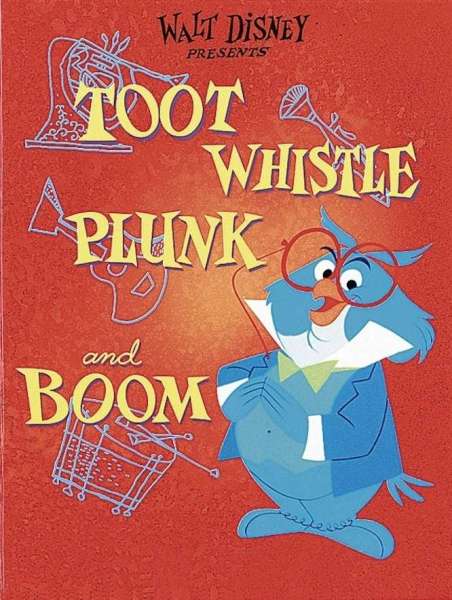
If you like this film, let us know!
- Infos
- Casting
- Technical infos
- Photos
- Videos
- Film quotes
- Characters
- Music
- Awards
Released in USA 10 november 1953
Length 10minutes
OriginUSA
Genres Animation
Themes Films about education, Films about music and musicians, Documentary films about music and musicians, Documentaire sur une personnalité, Musical films, Court métrage éducatif de Disney, Children's films
Rating70%










Les Instruments de musique (Toot, Whistle, Plunk and Boom) est un court métrage d'animation réalisé par Ward Kimball et Charles A. Nichols pour les studios Disney, sorti au cinéma le 10 novembre 1953. Il est considéré comme une Silly Symphony non officielle. Il constitue le deuxième et dernier volet de la mini-série Adventures in Music, après Melody (1953).
Synopsis
Le professeur Owl (Hibou) essaye d'enseigner la musique à ses élèves. Il leur apprend les principes ayant conduit à la création des instruments de musique. Il explique avec démonstration depuis la préhistoire que quatre sons de base sont à l'origine des quatre familles d'instrument :Actors
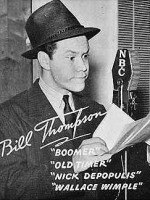
Bill Thompson
(Professor Owl / Bertie Birdbrain)

Thurl Ravenscroft
Comments
Leave comment :
Suggestions of similar film to Toot, Whistle, Plunk and Boom
There are 41 films with the same actors, 53 films with the same director, 5022 with the same cinematographic genres, 13490 films with the same themes (including 0 films with the same 7 themes than Toot, Whistle, Plunk and Boom), to have finally 70 suggestions of similar films.If you liked Toot, Whistle, Plunk and Boom, you will probably like those similar films :
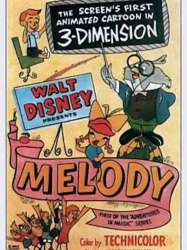
Melody (1953)
, 10minutesDirected by Ward Kimball, Charles August Nichols
Origin USA
Genres Animation
Themes Films about music and musicians, Musical films, Children's films
Actors Bill Thompson
Rating63%





Le professeur Owl (Hibou) essaye d'enseigner la musique à ses élèves. Il doit leur apprendre les principes de base de la mélodie.
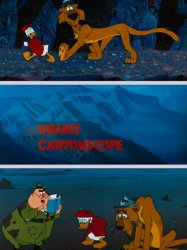
Grand Canyonscope (1954)
, 6minutesDirected by Charles August Nichols
Origin USA
Genres Comedy, Animation
Themes Films about animals, Films about birds, Mise en scène d'un canard, Children's films
Actors Clarence Nash, Bill Thompson
Rating67%





Un ranger est en train d'expliquer ce qu'est le Grand Canyon à un groupe de touriste, parmi lesquels Donald, qui bien entendu provoque des désastres partout où il passe...
 , 6minutes
, 6minutesDirected by Charles August Nichols
Origin USA
Genres Animation
Themes Films about animals, Films about birds, Mise en scène d'un canard, Children's films
Actors Clarence Nash, Bill Thompson
Rating66%





J.J. Fate nous explique à nouveau pourquoi les accidents qui peuvent nous arriver ne sont pas de sa faute, mais plutôt le résultat d'un manque de précautions. Et il se sert de Donald pour illustrer ses propos...
 , 8minutes
, 8minutesDirected by Charles August Nichols
Origin USA
Genres Animation
Themes Films about animals, Films about birds, Mise en scène d'un canard, Children's films
Actors Clarence Nash, Bill Thompson
Rating68%





Par une paisible journée dans une petite ville J.J. Fate apparaît et nous explique pourquoi il ne faut pas le blâmer pour les accidents qui peuvent nous arriver. Et il se sert de Donald pour illustrer ses propos...

Charlotte's Web (1973)
, 1h34Directed by Iwao Takamoto, Charles August Nichols
Origin USA
Genres Drama, Comedy, Musical theatre, Musical, Animation
Themes Films about animals, Films about music and musicians, Film d'animation mettant en scène un animal, Films about spiders, Films about pigs, Musical films, Buddy films, Children's films, Mise en scène d'un mammifère
Actors Debbie Reynolds, Paul Lynde, Henry Gibson, Danny Bonaduce, Agnes Moorehead, Rex Allen
Rating68%





When farmer John Arable decides to "do away with" the runt of a litter of pig, his daughter Fern intervenes, telling him that it is absurd to kill it just because it is smaller than the others. John decides to spares the piglet and let Fern raise it as a pet. Fern nurtures it lovingly, naming it Wilbur. Six weeks later, Wilbur, due to being a spring pig, has matured, and John tells Fern that Wilbur has to be sold (his siblings were already sold). Fern sadly says good-bye as Wilbur is sold down the street to her uncle, Homer Zuckerman. At the farm, a goose coaxes a sullen Wilbur to speak his first words. Although delighted at this new ability, Wilbur still yearns for companionship. He attempts to get the goose to play with him, but she declines on the condition that she has to hatch her goslings. Wilbur also tries asking a rat named Templeton to play with him, but Templeton's only interests are spying, hiding, and eating. Wilbur then wants to play with a lamb, but the lamb's father says sheep do not play with pigs because it is only a matter of time before they are turned into smoked bacon and ham. Horrified at this depressing discovery, Wilbur reduces himself to tears until a mysterious voice tells him to "chin up", and wait until morning to reveal herself to him. The following morning, the voice reveals herself to be an araneus cavaticus named Charlotte living on a web overlooking Wilbur's enclosure. Charlotte tells Wilbur that she will come with a plan guaranteed to spare his life.

Mail Dog (1947)
, 7minutesDirected by Jack Hannah, Charles August Nichols
Origin USA
Genres Animation
Themes Films about animals, Films about dogs, Children's films, Mise en scène d'un mammifère
Actors Pinto Colvig
Rating61%





Pluto, chien soldat, garde le poste n 5 lorsqu'un avion postal perd un sac de courrier dans une tempête. Pluto est alors chargé de ramener le courrier à l'aéroport.

Canine Casanova (1945)
, 7minutesDirected by Charles August Nichols
Origin USA
Genres Animation
Themes Films about animals, Films about dogs, Children's films, Mise en scène d'un mammifère
Actors Pinto Colvig, Lee Millar, Billy Bletcher
Rating62%





Pluto essaye d'attirer l'attention de Dinah le teckel mais elle l'ignore. En utilisant un énorme os, il tente de lui voler un baiser mais n'y arrive pas. Dinah se fait alors attraper par la fourrière. Après lui avoir porté secours et l'avoir libéré, Pluto obtient enfin son baiser en récompense mais découvre qu'elle est déjà la mère d'une portée de chiots.
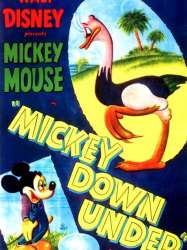
Mickey Down Under (1948)
, 7minutesDirected by Charles August Nichols
Origin USA
Genres Comedy, Animation
Themes Films about animals, Films about dogs, Mise en scène d'un rongeur, Mise en scène d'une souris, Children's films, Mise en scène d'un mammifère
Actors Jimmy MacDonald, Pinto Colvig
Rating57%





Mickey est l'exploitant d'une bananeraie en Australie... Il joue avec son boomerang et le lance à Pluto qui en est un peu effrayé. Mickey tombe sur un œuf d'autruche et souhaite le consommer mais ce n'est pas du goût de l'autruche qui le couve.
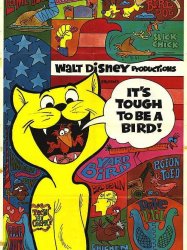
It's Tough to Be a Bird (1969)
, 21minutesDirected by Ward Kimball
Origin USA
Genres Documentary, Animation
Themes Films about animals, Films about birds, Children's films
Actors Ruth Buzzi, Richard Bakalyan, Paul Frees, Ward Kimball
Rating66%





Le personnage principal, un petit oiseau rouge, explique l'évolution de l'oiseau (avec une énumération de termes scientifiques). Il évoque également l'influence qu'ont les oiseaux à l'égard des hommes, incapables de voler; il montre ainsi que les oiseaux ont largement contribué à la culture humaine (par exemple, dans les hiéroglyphes, on remarque une présence, hyperbolique sans doute, des oiseaux.), bien que les hommes, justement, souhaitent souvent les tuer. Les parcs naturels montrés à la fin du moyen-métrage montrent la passion des hommes pour les oiseaux.

Cat Nap Pluto (1948)
, 7minutesDirected by Charles August Nichols
Origin USA
Genres Animation
Themes Films about animals, Films about cats, Films about dogs, Children's films, Mise en scène d'un mammifère
Actors Pinto Colvig, Clarence Nash
Rating65%





Pluto souhaite se reposer après une nuit dehors mais le chat Figaro veut jouer...
 Connection
Connection